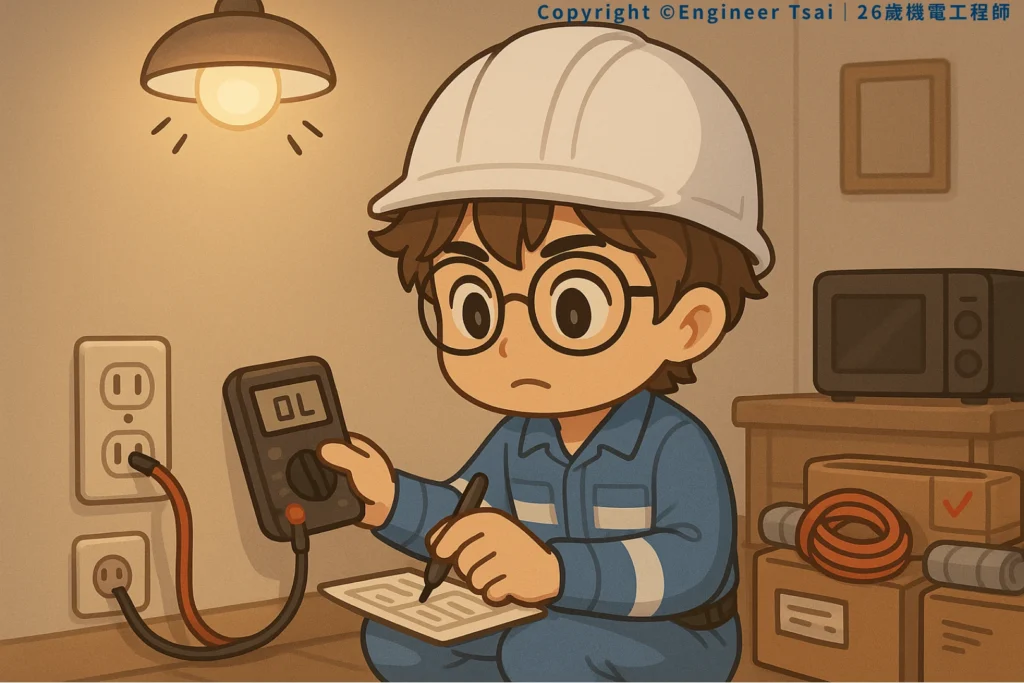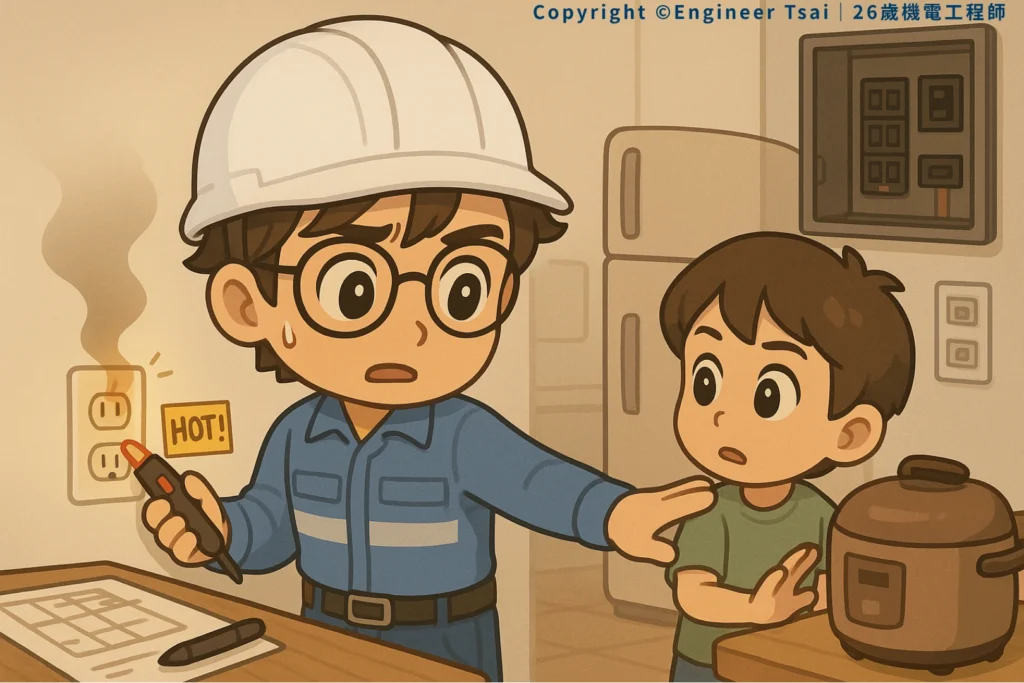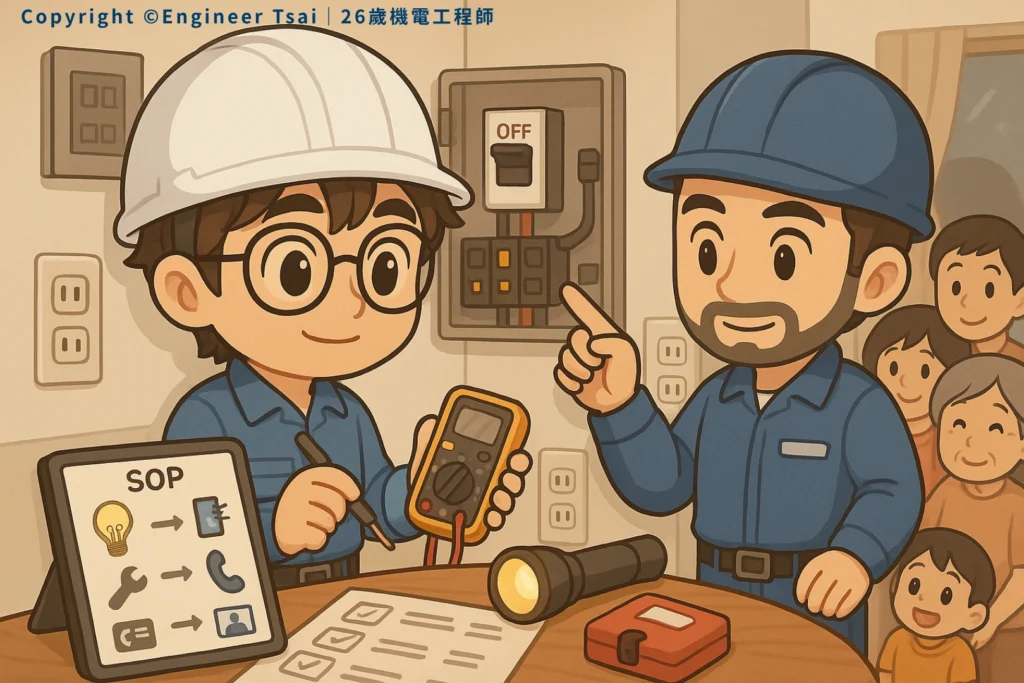Ever notice the lights flicker, an outlet that’s suddenly dead, or your breakers keep tripping for no clear reason? there might some Electrical Hazards!
A lot of folks just shrug it off—“It’s probably a loose plug,” or “Maybe it’ll fix itself in a few days.”
But here’s the truth: Electrical hiccups are often warning signs of bigger (and more dangerous) problems down the road.
Quick Takeaway:
“When your home’s power is acting up, think of it like the first symptoms of a cold—ignore it, and it’ll probably get worse.”

1. Lights Flickering or Dimming? Voltage Might Be the Culprit
If your lights keep blinking or changing brightness, don’t just blame old bulbs.
A lot of times, it’s a sign of unstable voltage or loose wiring connections.
What to do:
Don’t just swap the bulb—check if your main panel or breaker feels hot to the touch. See if other outlets or appliances on the same circuit are acting weird, too.
2. Dead Outlet? It’s Not Always “Just Broken”
If an outlet suddenly stops working, don’t rush to replace it!
The problem could be a tripped breaker, loose wiring, or even an overloaded circuit.
Action step:
Check your breaker panel first—look for any tripped switches. Still nothing? Grab a multimeter and test for voltage. (And please, never test by shorting wires—stay safe!)
3. Appliances Give You a Little “Zap”? Watch Out for Grounding Issues
Ever touched your fridge, stove, or washing machine and felt a little tingle?
That’s a red flag for grounding issues or even a leak of current inside your appliance.
Pro tip:
Upgrade your outlets to three-prong, properly grounded ones—especially in the kitchen, bathroom, and anywhere it might get wet.

4. Breakers Keep Tripping? Don’t Just Blame the Utility Company
If your breakers trip whenever you run big appliances, the issue is usually either an undersized main breaker or old, worn-out wiring.
Story from the field:
I once helped a family in an old apartment. Every time they ran the microwave and rice cooker together, the power cut out. Turns out their main breaker was only 30A—not enough for today’s appliances. Upgrading the breaker and splitting some circuits fixed everything.
5. Outlets or Extension Cords Feel Hot or Look Burnt?
If you ever notice an outlet or extension cord that’s warm to the touch—or worse, turning yellow or black—stop using it right away!
That means you’re pulling too much current through it, which can turn into a fire hazard.
Action step:
Stop using it, replace the outlet or cord, and have an electrician check your circuit load.
6. Multiple Appliances Dying at Once? Check Your Power Supply
If three gadgets quit on you at the same time, don’t blame your luck.
It’s often a surge or unstable voltage that fries the electronics—especially during storms or if there’s construction nearby.
Takeaway:
Consider a surge protector or voltage regulator. And keep an eye on utility company announcements—shut off and unplug sensitive stuff during big outages or work in your area.

Quick Troubleshooting Checklist (SOP)
- Observe the symptoms: Flickering lights, dead outlets, weird appliance behavior.
- Check breakers: Main and sub-breakers—are any tripped?
- Test voltage: Use a multimeter to see if outlets are getting power.
- Feel for heat: Outlets or cords that are warm or discolored are red flags.
- Ask your neighbors: Are they seeing the same thing? Rule out area-wide issues.
- Call a pro if needed: When in doubt, get a licensed electrician—don’t risk it!
Final Note: Don’t Ignore the Electrical Hazards Signs
It’s never worth putting off Electrical Hazards. Catch the small stuff early and save yourself a major headache (and possibly a disaster) later.
Have you ever had a “little” electrical problem turn into a big mess?
Got a troubleshooting tip or DIY story to share?
Drop a comment below—let’s help each other keep our homes safe and sound!
📌 Further Reading:
🔹 Short Circuit: What It Is and How to Prevent It
Understand the root causes of short circuits to seriously level up your home safety.
🔹 Common Multimeter Mistakes and How to Avoid Them
Master your multimeter, troubleshoot confidently, and handle surprises like a pro.
Let me know if you want any section even more “Americanized” or tailored for renters, homeowners, or DIYers!


